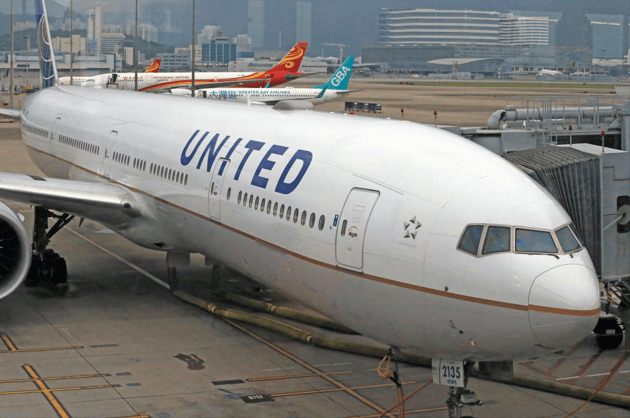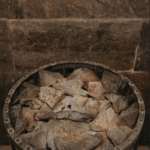United Airlines Flight UA770 became the focus of aviation safety in 2025 when it faced two separate in-flight emergencies that led to precautionary diversions. In each case, the flight crew responded promptly to technical alerts, prioritized passenger safety, and executed an emergency landing without incident. The following sections examine the dates and routes of the diversions, the causes behind each emergency, how the crew handled the situation, and the outcomes for passengers and airline operations.
Overview of the UA770 Incidents
Flight UA770 is not a permanently assigned route but a flight number reused on different United Airlines services. In 2025 it happened twice: on May 27 UA770 was a transatlantic flight from Barcelona (BCN) to Chicago O’Hare (ORD) aboard a Boeing 787-9 Dreamliner; on August 14 it was a domestic flight from Los Angeles (LAX) to Chicago aboard a Boeing 737 MAX 9. Both flights deviated from their schedules due to safety alerts and made unscheduled landings. Importantly, no passengers or crew were injured in either incident, and in all instances the airline’s emergency protocols ensured a safe outcome.
-
May 27, 2025 (Barcelona – Chicago): Boeing 787-9 Dreamliner encountered a suspected cabin pressurization anomaly at cruise altitude. Pilots declared an emergency and diverted to London Heathrow (LHR), landing safely.
-
August 14, 2025 (Los Angeles – Chicago): Boeing 737 MAX 9 received a cautionary system alert mid-flight. The crew diverted to Denver International Airport (DEN) and made an uneventful emergency landing.
In both events, air traffic controllers gave UA770 immediate priority handling. Emergency vehicles were on standby upon landing, but the aircraft in each case landed without any obvious problem, under its own power, and all passengers and crew disembarked normally. The airline then activated its passenger-care procedures to assist travelers with onward journeys. These incidents illustrate how modern airliners and trained crews use layered safety systems to handle even small anomalies by erring on the side of caution.
Barcelona-to-Chicago Flight Diverted to London (May 27, 2025)
On the afternoon of May 27, 2025, United Flight UA770 departed Barcelona bound for Chicago aboard a Boeing 787-9 Dreamliner carrying roughly 257 people (passengers plus crew). Everything was routine until the flight reached cruising altitude (about 37,000 feet) over the North Atlantic. At that point, the crew received a pressurization warning—an alert indicating a potential problem with the system that keeps the cabin air at safe, breathable pressure.
The flight deck immediately declared an emergency by squawking 7700 on the transponder, the universal code for a general aviation emergency. This action alerted nearby aircraft and air traffic control (ATC) that UA770 needed priority handling. The pilots coordinated with ATC and quickly decided to land at London Heathrow Airport, the nearest major international airport with long runways and full emergency services. Heathrow’s infrastructure and United’s presence there (ground staff, maintenance teams, etc.) made it the logical choice for an emergency diversion of a long-haul aircraft.
Air traffic controllers cleared the way. UA770 began a controlled descent toward Heathrow, with emergency crews ready on the ground. During the descent and landing, oxygen masks did not deploy and the cabin remained stable, suggesting that the pressurization alert was likely a precautionary sensor alarm rather than an actual loss of cabin pressure. Throughout this time, the pilots and flight attendants kept passengers informed in a calm, reassuring manner. Upon reaching Heathrow, UA770 touched down smoothly on Runway 27R at 4:55 PM local time. The plane taxied to Gate B44 under its own power. Emergency vehicles escorted it on the ground, but no smoke, fire, or injury occurred at any point.
Once on the ground, United’s operations teams took over. The airline provided immediate support to travelers: medical staff and gate agents were available, though no passengers needed medical treatment. In the terminal, United arranged for those whose connections were missed to be rebooked, often providing hotel rooms and meal vouchers when an overnight stay in London was required. Families, elderly passengers, and those with special needs received assistance through immigration and customs. The aircraft itself underwent a thorough inspection by maintenance crews in coordination with Boeing and aviation regulators. United reported that all passengers and crew remained unharmed, and no ill effects were reported even weeks later.
Emergency Landing Key Points:
-
UA770 (Boeing 787-9) from Barcelona to Chicago, pressurization alert at cruise altitude.
-
Crew squawked 7700 (general emergency) and diverted to Heathrow.
-
Landed safely at 4:55 PM; all on board deplaned normally, no injuries.
-
Airline provided rebookings, hotels, and meals; engineers inspected the aircraft thoroughly.
Los Angeles-to-Chicago Flight Diverted to Denver (August 14, 2025)
UA770 reappeared on August 14, 2025, this time as a domestic United service from Los Angeles to Chicago operated by a Boeing 737 MAX 9. The flight left LAX on time at 6:47 PM Pacific Time, carrying about 156 passengers and 6 crew members. After climbing to cruising altitude (around 35,000–37,000 feet), the flight progressed normally for about an hour and a half. However, roughly 90 minutes into the journey while flying over the western United States, an unspecified cockpit warning appeared. Early reports indicated it was a “sensor alert” — possibly related to engine instruments, hydraulics, or environmental systems — but the exact system involved was not publicly detailed.
Following airline protocol for any significant warning, the captain consulted the quick-reference checklists and contacted air traffic control. Prioritizing safety, the crew decided to divert the flight to Denver International Airport. Denver was chosen because it lay along the flight path to Chicago and has long runways and comprehensive emergency services. (Denver is a hub airport for United and also equipped for handling diverted flights from western U.S. cities.) The pilots informed passengers over the intercom: they advised that a precautionary landing was needed and reassured everyone that the situation was under control.
Emergency teams at Denver were notified and awaited the flight’s arrival. UA770 descended and landed at Denver at approximately 8:20 PM Mountain Time. The landing was routine and under control — there was no loss of cabin pressure or fire, and oxygen masks did not deploy, indicating again that the alert was precautionary. Passengers remained calm; cabin crew directed everyone through the standard safety procedures for an unscheduled landing. Once on the ground, UA770 parked at a gate. No passengers required medical care, though paramedics were on standby.
After landing, United Airlines set about re-accommodating the travelers. Many passengers had connecting flights to Chicago or elsewhere that night, and United agents at the gate quickly arranged alternate flights or rail connections. Those needing an overnight stay were given hotel rooms and meal vouchers. Although the flight experienced a delay, the airline’s handling of the situation aimed to minimize disruption. United later issued a statement saying the diversion was made “out of an abundance of caution” following an onboard alert. As with the earlier diversion, safety was emphasized as the top priority.
Emergency Landing Key Points:
-
UA770 (Boeing 737 MAX 9) from Los Angeles to Chicago, sensor/technical alert mid-flight.
-
Pilots diverted to Denver International Airport as a precautionary measure.
-
Landed safely at ~8:20 PM; no injuries or serious issue aboard.
-
United arranged rebooking and accommodations for passengers; regulatory authorities were notified.
Crew Response and Emergency Protocols
In both diversions, the flight crews followed standard emergency procedures for modern airliners. Key actions included:
-
Declaring an Emergency: In the Barcelona case, the crew explicitly set their transponder to Squawk 7700, the international code indicating a general emergency. This signaled ATC to give the flight immediate priority. For the Denver diversion, United confirmed the crew also made a mayday announcement and coordinated closely with controllers (even if the formal squawk code was not publicly specified, ATC treated UA770 as an emergency flight).
-
Coordinating with Air Traffic Control: Once the emergency was declared, pilots worked with controllers to identify the nearest suitable airport. Controllers in Europe re-routed UA770 toward Heathrow’s runway. In the U.S. flight, controllers helped guide UA770 away from busy commercial traffic in favor of Denver’s runways. ATC provided real-time weather and runway information to the pilots.
-
Informing Cabin Crew and Passengers: The cockpit crew communicated continuously with the flight attendants. In both cases, the pilots made calm announcements to passengers explaining that the diversion was precautionary. Flight attendants relayed instructions, checked on passenger well-being, and prepared the cabin for the landing. Crew reports noted that because there was no actual depressurization, oxygen masks were not deployed; however, the crew monitored cabin pressure gauges closely in case masks became necessary.
-
Following Checklists: For any alert (cabin pressure, engine, or other system), pilots immediately consult the aircraft’s Quick Reference Handbook (QRH) checklists. These guidelines help them address anomalies systematically. On UA770, the pilots stepped through the appropriate QRH procedures, which likely included checking system status, cross-checking sensor readings, and confirming that emergency descent or cabin altitude procedures were underway.
These steps illustrate the aviation adage aviate, navigate, communicate: first keep the aircraft under control (aviate), then handle the flight path (navigate) by heading to a safe airport, and throughout all this clearly communicate with ATC and the cabin. The performance of both crews was praised by safety experts for sticking closely to training. Their actions – reacting early to the warning, coordinating with ground support, and keeping passengers informed – are exactly what simulations prepare pilots and flight attendants to do in an emergency.
Passenger Experience and Support
From the passengers’ perspective, both diversions were unsettling but handled smoothly. In each cabin, travelers reported initial concern (and in some cases apprehension) when they realized an emergency landing was imminent. Social media threads later showed many praising the calm professionalism of the crew. One passenger on the Dreamliner noted that “the captain explained it was a safety check, and kept us updated the whole time – we felt really taken care of.” Similar comments emerged from the Denver flight: passengers said the crew’s reassurances and clear instructions kept the atmosphere orderly.
While on board, flight attendants instructed passengers to follow the usual brace positions for landing and checked that everyone’s seatbelts were fastened. There was no panic or rush – partly because the cabin remained pressurized and quiet (no smoke or rapid decompression alarm). Once the aircraft came to a stop, crew members quickly guided people off the plane into the terminal or boarding area, emphasizing patience as ground teams handled the situation.
After landing, United Airlines and airport staff assisted passengers. Travelers were helped through any immigration and customs procedures (in London) or local formalities (in Denver). The airline provided:
-
Rebooked Flights: Agents offered seats on the next available United flights to Chicago or onward destinations. In many cases, passengers were put on flights within hours, avoiding long delays.
-
Hotel Accommodations: For those who could not travel immediately (especially on the overnight Denver diversion), United arranged hotel rooms at no cost to the traveler. Families and alone travelers alike had lodging and transportation to the hotel covered.
-
Meals and Refreshments: Meal vouchers were distributed to ensure everyone had food and drink while waiting. Airport lounges were made available if possible.
-
Special Assistance: Passengers requiring extra help — such as young children, seniors, or disabled travelers — were given priority rebooking and dedicated escorts through the airport.
United’s customer service teams worked overnight into the next day to minimize inconvenience. In London, United opened a customer assistance center to handle various concerns. The overall support effort reflected industry norms and regulatory obligations: under U.S. and international rules, airlines must care for passengers when flights are involuntarily disrupted. UA770’s crews and staff abided by these rules comprehensively.
Outcomes and Aftermath
The ultimate outcome of both diversions was positive in terms of safety. No one was hurt, no emergency evacuation slide was needed, and the aircraft remained fully intact. Both planes underwent inspections before returning to service: maintenance teams, along with Boeing and regulatory representatives, checked the pressurization system on the Dreamliner and ran diagnostics on the 737’s alerted sensor. Reports indicated that neither aircraft had a critical failure. In the Barcelona case, no follow-up incidents occurred, and by late August investigators reported “no recurrence” of the issue or any health impacts on passengers. In the Denver case, United stated it took the alert seriously but ultimately determined it was triggered by a cautionary signal rather than a confirmed malfunction.
There were some downstream effects. Both flights arrived in Chicago (and other planned destinations) later than scheduled, causing missed connections. United rebooked connecting passengers on later flights or offered refunds. A few travelers expressed frustration on social media about the delay and the initially limited information. However, many others tweeted relief and thanks for the safe landings. The hashtag #UA770 briefly trended as news outlets picked up the story (noting “diverts safely”, “passenger safety” etc.).
Regulators also took note. The U.S. Federal Aviation Administration (FAA) requested a detailed report from United about the Denver incident, as is standard procedure for all diversion events. The NTSB opted not to open a formal accident investigation, indicating it was satisfied the diversions were precautionary. Both agencies monitor such incidents to spot any patterns of mechanical issues, but no further action was announced.
For United, the financial impact was relatively minor. The costs involved rebooking passengers and crew (including hotel costs) plus any maintenance inspections. Airlines plan for such contingencies, and the passenger care was viewed as fulfilling United’s obligations. In the broader perspective of airline operations, unscheduled landings are rare but expected. Part of airline planning includes having teams ready to handle diversions. Both Heathrow and Denver airports activated their diversion procedures seamlessly, showing good coordination with United.
Aviation Safety Lessons
UA770’s emergency diversions underscore several important lessons about aviation safety:
-
Safety Over Schedule: In both events, United and the crews chose to “play it safe” rather than push on to the destination. This conservative mindset—divert first, investigate later—reflects how air travel is kept so safe. Even though neither issue turned out to be immediately life-threatening, the early decision to divert eliminated any risk to lives.
-
Redundancy in Design: Modern airliners like the Boeing 787 and 737 MAX have multiple backup systems. The pressurization and sensor alerts activated precisely when needed. Even if an alert ends up being a minor glitch, the aircraft design ensures there are other safeguards (multiple sensors, cross-checked systems) to protect people. The fact that alarms went off at all indicates the planes’ monitoring systems were working.
-
Crew Training and Communication: Both flight decks and cabin crews executed procedures learned in thousands of hours of training. The smooth coordination between pilots, ATC, and cabin staff shows the effectiveness of recurrent emergency drills that airlines mandate. The clear announcements and calm demeanor are exactly what training emphasizes.
-
Passenger Rights and Support: Travelers learned that regulations (like U.S. Department of Transportation rules) guarantee their care during unscheduled events. The meals, hotels, and alternative flights were part of those obligations. United’s prompt support demonstrated compliance with those standards and likely mitigated customer dissatisfaction.
-
Industry Context: UA770 is one example of many successful diversions. Similar incidents (for instance, pressurization alarms on other airlines’ jets) have happened without tragedy. Each case reinforces public trust that even when things go wrong, the system responds predictably.
Overall, the UA770 diversions illustrate “what didn’t happen”: no injuries, no panic, and no accident. By following checked procedures and communicating openly, the crews ensured that a potential crisis never developed. Aviation experts often point to such events not as blemishes but as validation of the safety systems—the alarms and drills that prevented any harm.
Conclusion
The United Airlines Flight UA770 emergency diversions of 2025 serve as textbook examples of aviation safety in action. On May 27, the Dreamliner from Barcelona was gently steered to London when a pressure alert appeared; on August 14, the 737 MAX 9 from L.A. quietly landed in Denver after an onboard warning. In both scenarios, trained pilots and flight attendants turned an unexpected problem into a routine exercise. Passengers experienced only minor inconvenience and received full support, while air traffic controllers and airport teams stood ready to assist.
These incidents remind us that air travel, while largely routine, is supported by layers of caution. Systems detect even slight anomalies, crews practice responses constantly, and airlines prioritize protecting lives above on-time performance. For the flying public, UA770’s story is reassuring: it highlights how the industry’s dedication to safety—through technology, training, and clear protocols—keeps journeys secure, even when surprises happen.








